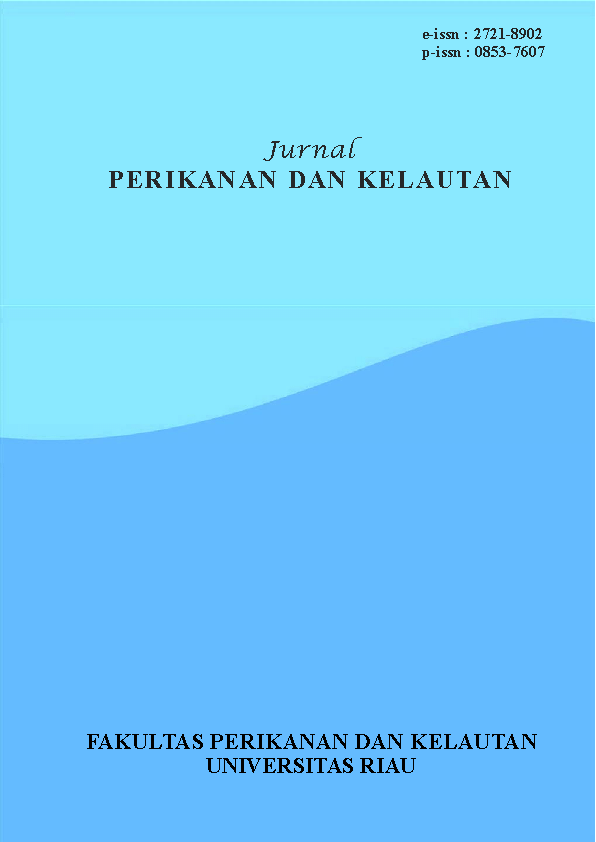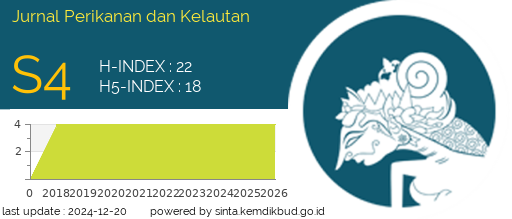Marine Ecotourism Development Strategy at Tiram Beach, Padang Pariaman Regency, West Sumatra Province
DOI:
https://doi.org/10.31258/jpk.29.3.327-333Keywords:
Padang Pariaman, Development, Beach, Marine EcotourismAbstract
The research was conducted in February-April 2024 at Tiram Beach, Padang Pariaman Regency, West Sumatra Province. The aims and benefits of the study are to identify the potential and objects that need to be developed at Tiram Beach as a marine ecotourism area, to find out the public's perception of ecotourism activities at Tiram Beach, to formulate a strategy for developing marine ecotourism at Tiram Beach to support sustainable tourism. The research method used was a survey. Research carried out in the field includes measuring water quality and aiming to see the level of water quality, temperature, brightness, salinity, pH, and current speed to support marine ecotourism on Tiram Beach. After that, the respondents were selected: 20 tourists, 20 local communities, 15 business actors, and ten policymakers. Based on the Suitability Index, Tiram Beach is in the S1 category (very suitable) with a score of 75%, and it is to be used as marine ecotourism by observing 10 IKW parameters. Based on the development strategy using SWOT analysis through field observations, strength results were obtained, including restaurants' international standard public toilets; weakness covers: lack of development breakwater in the area of coastal tourist locations and lack of creativity from business actors, opportunity includes: the existence of objects that affect the welfare of local communities which can be used to increase income through buying and selling activities and services for visiting tourists, Threats includes: environmental changes that will affect the continuation of ecotourism on Tiram Beach, ecological degradation caused by humans
Downloads
References
[MCMRP] Marine Coastal Resource Management Program. (2004). Petunjuk Pengelolaan Pesisir dan Laut. Proyek Pengelolaan Pesisir dan Laut. Direktorat Jenderal Pesisir dan Pulau-Pulau Kecil. Departeman Perikanan. Jakarta.
Arikunto, S. (2016). Metode Penelitian Kualitatif. Jakarta: Bumi Aksara. p143
Devano, R., Yoswaty, D., & Nasution, S. (2020). Potential of Bahari, Tiram Beach Ecotourism Padang Pariaman District, West Sumatera Province. Journal of Coastal and Ocean Science, 2(1): 2-5.
Menteri Lingkungan Hidup. (2004). Keputusan Menteri Lingkungan Hidup Nomor 51 Tahun 2004 tentang Baku Mutu Air Laut. Kemnaker dan BPS (Badan Pusat Statistik) Jakarta. 1-8.
Saribun, D.S. (2007). Pengaruh Jenis Penggunaan Lahan dan Kelas Kemiringan Lereng terhadap Bobot Isi, Porositas Total, dan Kadar Air Tanah Pada Sub-DAS Cikapundung Hulu. Jurusan Ilmu Tanah Fakultas Pertanian Universitas Padjadjaran. Jatinangor.
Triyatno, F., Putra, A., & Kamal, A. (2019). Identifikasi Karakteristik Fisik dan Perubahan Wilayah mangrove di pesisir bagian Selatan Kota Padang Sumatera Barat-Indonesia. Sumatera Journal of Disaster, Geography and Geography Education, 3(1): 2580-4030.
Undang-Undang No. 10 Tahun 2009 tentang Kepariwisataan, Pengertian Wisata Bahari atau Tirta. p1-59
Yoswaty, D., & Samiaji, J. (2013). Buku Ajar Ekowisata Bahari. UR Press, Riau. p111.
Yulianda, F., & Butet, N.A. (2017). Pengembangan Ekowisata Bahari Berbasis Sumberdaya Pulau-Pulau Kecil di Pulau Sayafi, Kabupaten Halmahera Tengah. Jurnal Teknologi Perikanan dan Kelautan, 8(1): 1-17.








